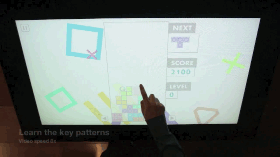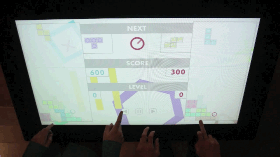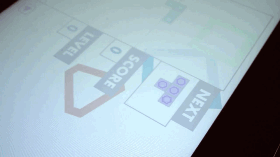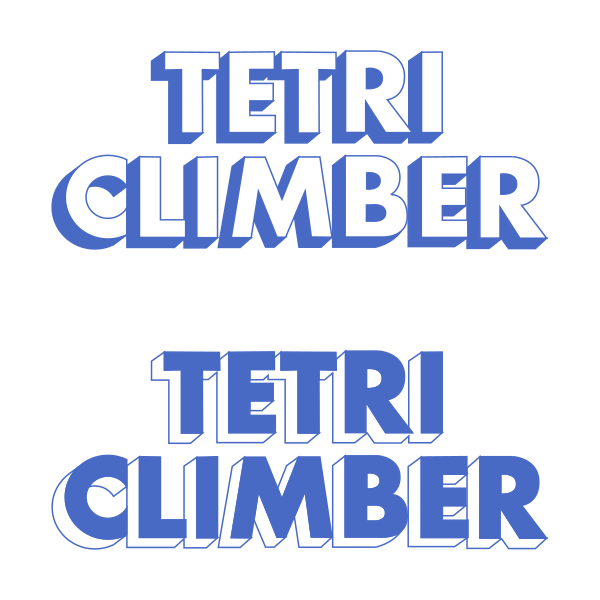| Project | TetriClimber |
|---|---|
| Type | Puzzle Game |
| Platform | Microsoft's PixelSense (formerly Surface) |
| Team | 2 Students |
| Background | Epitech Final Bachelor Project (France) |
| Role | Project Manager, Game Designer, Developer & Artistic Director |
| Inspiration | Tetris Plus, Gussun Oyoyo |
| Language | C# |
| Framework | XNA & Surface SDK |
| Tools | Inkscape, GitHub & Google Docs |
| Design Pattern | Game Loop, State Machine, Event Driven Architecture (Touch) |
| Year | 2013 |
| Repository | github.com/poksme/TetriClimber |
GamePlay
 TetriClimber's gameplay is based on Tetris with one simple addition: Climby. This round character is moving on the board, the goal is to take him as high as possible using tetrominoes. Climby movements are highly predictable, he follows 6 simple rules:
TetriClimber's gameplay is based on Tetris with one simple addition: Climby. This round character is moving on the board, the goal is to take him as high as possible using tetrominoes. Climby movements are highly predictable, he follows 6 simple rules:
- Climby never stops rolling
- If Climby comes across the border of the board he turns around
- If Climby comes across a one block deep hole he falls
- If Climby comes across a hole deeper than one block he turns around
- If Climby comes across an obstacle taller than one block he turns around
- If Climby comes across a one block tall obstacle he climbs
The higher Climby climbs, the higher your score will be on the leaderboard.
The player is controlling the tetrominoes falling from the top of the board using touch gestures similar to EA's Tetris on mobile phone. Climby's rolling speed depends on the board height (the higher the faster) and also on the left & right directional (displayed on both sides of the board).
Two Players
 TetriClimber being developed for Microsoft's PixelSense (formerly Surface) the player has plenty of room on the screen. There is so much space that we could fit two boards. This way, two players can compete side by side. This layout was inspired by both cocktail cabinet and 2 players cabinet.
TetriClimber being developed for Microsoft's PixelSense (formerly Surface) the player has plenty of room on the screen. There is so much space that we could fit two boards. This way, two players can compete side by side. This layout was inspired by both cocktail cabinet and 2 players cabinet.
Two player mode is a score race. But in order to spice up the gameplay we have put only one pair of directional buttons. The left player can only use the left button and the right player can only use the right button. This means that you can mess with your opponent timing but be aware that both buttons control both climby.
It's a double-edged sword!
Object Recognition
 Microsoft's PixelSense has built-in infrared sensors which can recognize object shapes and hand parts. We decided to use this feature to break the wall between the player and the game.
Microsoft's PixelSense has built-in infrared sensors which can recognize object shapes and hand parts. We decided to use this feature to break the wall between the player and the game.
The player will be able to use physical tetrominoes made of cardboard that will be recognized by the game when laid on the screen. The next tetromino to fall in the game will match the printed shape. This is a powerful feature that can only be used once for each shape.
